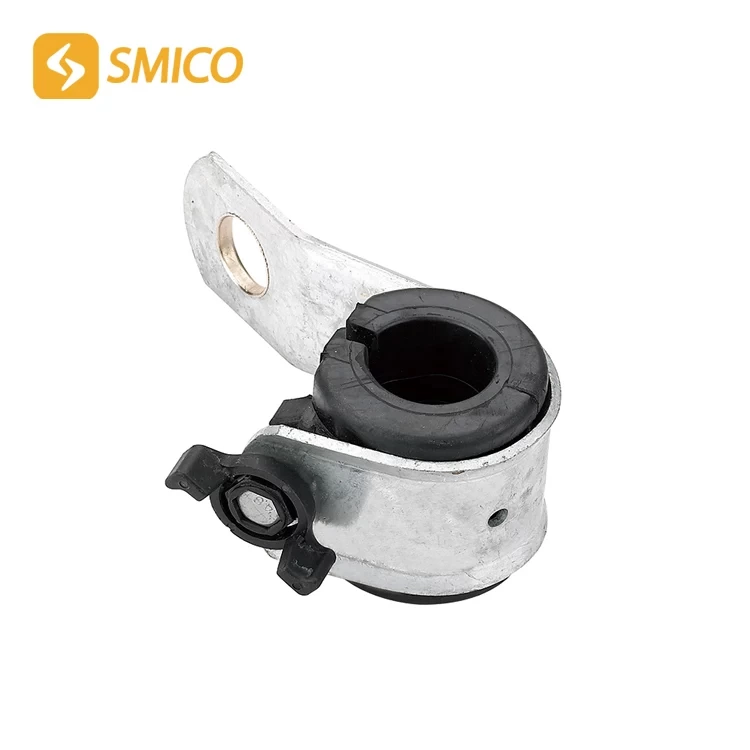Fiber Suspension Clamp Technical Parameters For Adss Optical Cable
fiber suspension clamp for ADSS optical cable is a key component of the power communication system, and its technical parameters directly affect the service life of the optical cable and the stability of the network. In actual projects, it is necessary to combine the characteristics of the optical cable, the installation environment and the mechanical properties to comprehensively consider, so as to avoid relying solely on the manufacturer's parameters and causing hidden dangers in the later operation and maintenance.
The material selection must meet the requirements of full dielectric insulation, the outer shell is made of high-density polyethylene or polyurethane, and the internal inserts are made of aluminum alloy or reinforced nylon. A project case shows that cable suspension clamp made of inferior nylon material has brittle cracks in a low temperature environment, resulting in excessive sag of the optical cable. The UV protection level of the shell material should meet the GB/T 16422.3 standard, and the anti-aging test must pass the 3000-hour xenon lamp irradiation test.
The mechanical performance parameters must be strictly matched with the specifications of the optical cable. The grip value should be controlled between 10%-20% of the rated tensile strength (RTS) of the optical cable. In a 220kV line project, when the grip force of aerial cable suspension clamps is designed to be 15%RTS, the strain value of the optical cable under dynamic wind vibration environment is optimal. The vertical load bearing capacity needs to consider the maximum icing condition. It is recommended to design with a safety factor of 1.5 times according to the IEEE 1138 standard.
The structural design should include three key elements: the pre-twisted clamping structure eliminates stress concentration, the thickness of the rubber cushion buffer layer is not less than 3mm, and the hinged opening and closing structure ensures that the installation torque is ≤25N·m. Comparative tests show that the angle suspension clamp with angle adjustment function can stabilize the bending radius of the optical cable at more than 40 times the diameter, effectively avoiding micro-bending losses.
Environmental adaptability indicators are often overlooked. The salt spray test must meet 480 hours of corrosion-free, and the operating temperature range should cover -40℃ to +70℃. A coastal project did not consider salt spray corrosion, and harga suspension clamp rusted and stuck after 18 months of use. The anti-electrocorrosion design must ensure that the potential difference between the metal parts and the optical cable surface is less than 2V to avoid suspended potential discharge.
The installation parameters must clearly specify the construction details. The embedding depth of the optical cable should reach 75% of the twisted wire length. The fastening bolts must be tightened three times in diagonal order using a torque wrench. A construction team failed to use the torque wrench as required, resulting in 30%messenger suspension clamp grip force dispersion exceeding the allowable range.
Quality inspection should include three-dimensional load testing, 2 million vibration fatigue tests and 2000 hours of accelerated aging tests. Focus on checking the residual deformation of suspension clamp with i hook. The standard stipulates that the permanent deformation after unloading shall not exceed 5% of the initial deformation. It is recommended to establish a full life cycle data archive and analyze the state evolution of the wire clamp in combination with drone inspection images.
Systematic selection strategies require the establishment of a parameter association model to include variables such as span, height difference, and wind pressure in the calculation. When developing parameter matching software, it is recommended to integrate a finite element analysis module to simulate the force distribution of the wire clamp under different working conditions in real time. A tension monitoring device should be used during the operation and maintenance phase to trigger an early warning when the strain value of the optical cable exceeds 70% of the design value.

